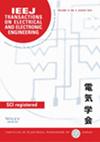求助PDF
{"title":"Minimum Initial Marking Estimation in Labeled Petri Nets for Required Resource Minimization of Automated Manufacturing Systems","authors":"Hao Yue, Junjie Chen, Can Wang, Xin Yang, Hesuan Hu, Shanchen Pang","doi":"10.1002/tee.70044","DOIUrl":null,"url":null,"abstract":"<p>With an increase in the scale and complexity of practical industrial applications, the performance of automated manufacturing systems is usually more likely to be affected by resource limitation. In order to make good use of resources for automated manufacturing systems by using the formalism of Petri nets, one of the mainly studied problems is how to estimate the minimum initial markings (MIMs) in a known labeled Petri net model based on the observation of its label sequence. Unfortunately, this problem's computational complexity is NP-hard in theory. Previous research either suffers from excessively high computation costs or attempts to alleviate the computational burden at the expense of obtaining only a subset of MIMs. In this paper, an approach using an improved genetic algorithm with the token number prediction is proposed to compute the MIM estimation. Illustrative examples and comparative studies are provided to show the effectiveness and advantages of our proposed approach. © 2025 Institute of Electrical Engineers of Japan and Wiley Periodicals LLC.</p>","PeriodicalId":13435,"journal":{"name":"IEEJ Transactions on Electrical and Electronic Engineering","volume":"20 10","pages":"1637-1648"},"PeriodicalIF":1.1000,"publicationDate":"2025-05-19","publicationTypes":"Journal Article","fieldsOfStudy":null,"isOpenAccess":false,"openAccessPdf":"","citationCount":"0","resultStr":null,"platform":"Semanticscholar","paperid":null,"PeriodicalName":"IEEJ Transactions on Electrical and Electronic Engineering","FirstCategoryId":"5","ListUrlMain":"https://onlinelibrary.wiley.com/doi/10.1002/tee.70044","RegionNum":4,"RegionCategory":"工程技术","ArticlePicture":[],"TitleCN":null,"AbstractTextCN":null,"PMCID":null,"EPubDate":"","PubModel":"","JCR":"Q4","JCRName":"ENGINEERING, ELECTRICAL & ELECTRONIC","Score":null,"Total":0}
引用次数: 0
引用
批量引用
Abstract
With an increase in the scale and complexity of practical industrial applications, the performance of automated manufacturing systems is usually more likely to be affected by resource limitation. In order to make good use of resources for automated manufacturing systems by using the formalism of Petri nets, one of the mainly studied problems is how to estimate the minimum initial markings (MIMs) in a known labeled Petri net model based on the observation of its label sequence. Unfortunately, this problem's computational complexity is NP-hard in theory. Previous research either suffers from excessively high computation costs or attempts to alleviate the computational burden at the expense of obtaining only a subset of MIMs. In this paper, an approach using an improved genetic algorithm with the token number prediction is proposed to compute the MIM estimation. Illustrative examples and comparative studies are provided to show the effectiveness and advantages of our proposed approach. © 2025 Institute of Electrical Engineers of Japan and Wiley Periodicals LLC.
自动化制造系统所需资源最小化的标记Petri网最小初始标记估计
随着实际工业应用规模和复杂性的增加,自动化制造系统的性能通常更容易受到资源限制的影响。为了将Petri网的形式化应用于自动化制造系统中,使资源得到充分利用,如何在已知标记的Petri网模型中,基于对其标记序列的观察来估计最小初始标记(MIMs)是研究的主要问题之一。不幸的是,这个问题的计算复杂度在理论上是np困难的。以往的研究要么存在计算成本过高的问题,要么试图减轻计算负担,但却只获得了mim的一个子集。本文提出了一种改进的带有令牌数预测的遗传算法来计算MIM估计。举例说明和比较研究表明了我们所提出的方法的有效性和优越性。©2025日本电气工程师协会和Wiley期刊有限责任公司。
本文章由计算机程序翻译,如有差异,请以英文原文为准。

 求助内容:
求助内容: 应助结果提醒方式:
应助结果提醒方式:


